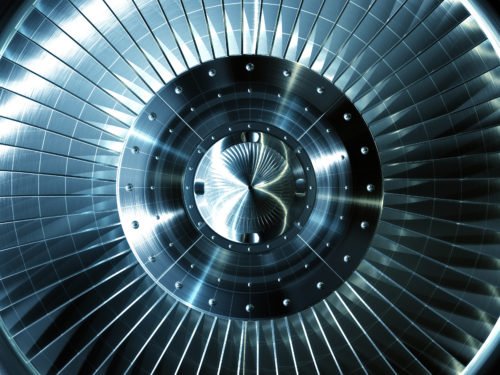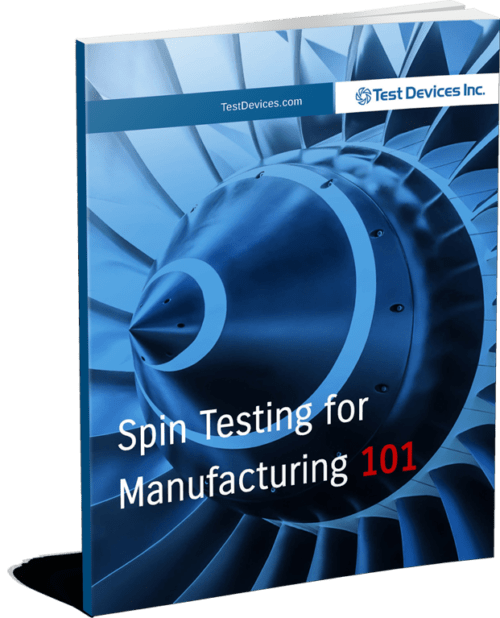Why You Should Invest in a Proof Test
Proof tests are special forms of validation tests that are intended to demonstrate the fitness of any given load-bearing root structure. In the case of spin testing, proof testing is typically performed in order to validate design requirements for certification, such as FAA or EASA for jet engines. It is also frequently used to screen for production quality in rotors, such as in turbomachinery rotors.
These tests are a critical step in any process centered around safety and meeting operational criteria. Proof testing allows organizations to confirm the integrity of both the safety and the function of critical rotor designs before these components are used in real-world applications. Test Devices, Inc. (TDI) offers a variety of proof testing forms that capture the effect of the operating environment of the rotor and the centrifugal load, helping designers to identify any potential design flaws or mechanical defects within a rotor.
How to Proof Test
Proof testing requirements in spin testing can vary depending on the purpose of the test. Since rotors are generally operation-critical parts, they necessitate rigorous documentation of all test procedures and results. Factors such as audit trail requirements and traceability further drive the need for clear and transparent testing and reporting.
At Test Devices, purpose-designed spin test systems are deployed in order to ensure that tests are performed accurately and designed to gather all of the data our clients need. Our spin pits have been specifically engineered to safely contain the rotor in case of unintended failure, as rotor failures lead to a high-energy explosion of lethal fragments.
Proof testing sees use in many applications. Some of these include:
- Jet engine forgings, disks, and bladed disks
- Turbocharger impellers and turbine wheels
- High speed electric motor rotors
- Medical and industrial centrifuges
- Rocket turbo-pump turbines
- Energy storage flywheels
Advantages of Proof Testing
Proof testing as part of spin testing with Test Devices offers numerous advantages, including:
Instrumentation and Data Measurement
Traditional tests could only measure the rotational speed of test articles and prove that they were able to endure a given centrifugal load. Now, TDI offers a host of varied proof tests that can measure a much wider range of data. Organizations can now choose from simple, economical testing or more complex and data-intensive tests depending on the requirements of the application.
When you work with TDI, we’re able to offer expertise in spin tooling, test setup design, and the state-of-the-art instrumentation. This means proof tests from us offer an exceptional value to clients. Our proof testing may include:
- High-Speed Video Imaging
- On-line Growth Measurement
- Rotating Optical Strain System
Purpose-Designed Spin Test System
Spin testing can often lead to the damage of components involved in the tests. In some applications, such as forging overspeed tests, shaft vibrations from rotor imbalance can be severe enough to cause serious setbacks. TDI’s air and electric drives rely on a proprietary damper design in order to tolerate high levels of unbalance before permanent damage occurs.
Our spin pits are also built in a modular fashion. This means they can accommodate varying levels of technology requirements for spin and R&D tests. PLC-based control systems mean that engineers and operators have the option of integrating a wealth of instrumentation and protocol options into their operations.
We also feature the industry’s most robust motor burst containment systems. Over four decades of successful, safe spin tests afford us the ability to stand by our containment design.
Proof/Overspeed Test in Production
These tests rely on spinning a rotor forging past its yield limits before it goes through final machining. This means that centrifugal stress is applied to the rotor in order to preferentially yield certain areas and fashion material properties. This process also makes for an excellent opportunity to screen for bad rotors that present bursting risks. Rotors that make it through these tests offer performance enhancing material properties that a conventional process cannot.
Proof/Overspeed Test for Verifying Integrity
Proof-tested components are frequently accelerated beyond their operating speed in measures of around 120-150%. This speed is then held from seconds to several minutes depending on the testing standard, giving engineers the opportunity to inspect the design, material selection, and manufacturing of a component. Some more advanced proof tests also incorporate thermal gradient and other forms of environmental factors to capture the realistic test conditions.
If you’re interested in seeing what a proof test can do for your organization, contact us today. Industry professionals will be glad to speak to you and work to meet your unique needs.




